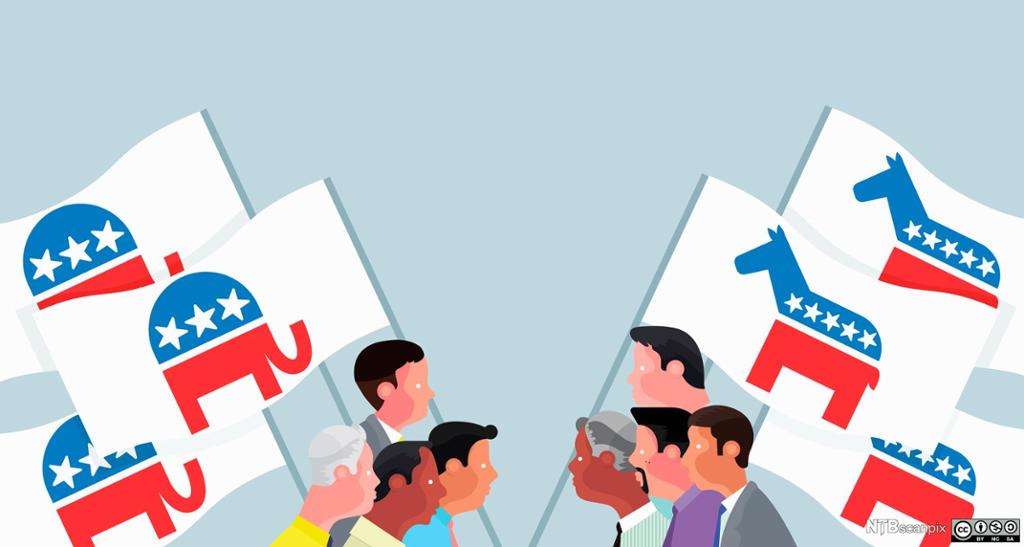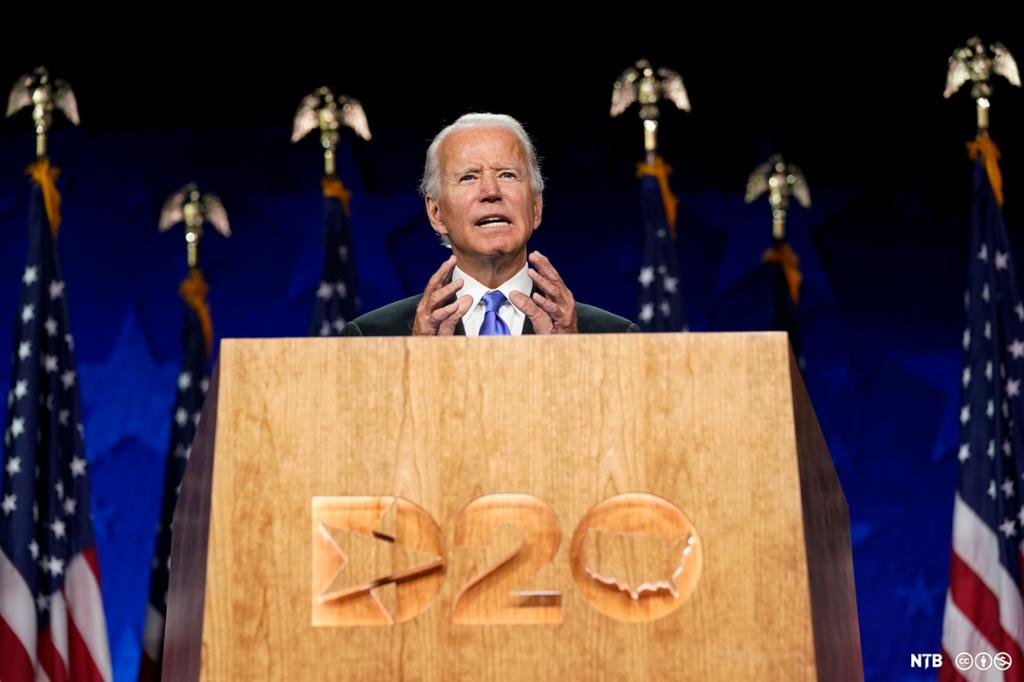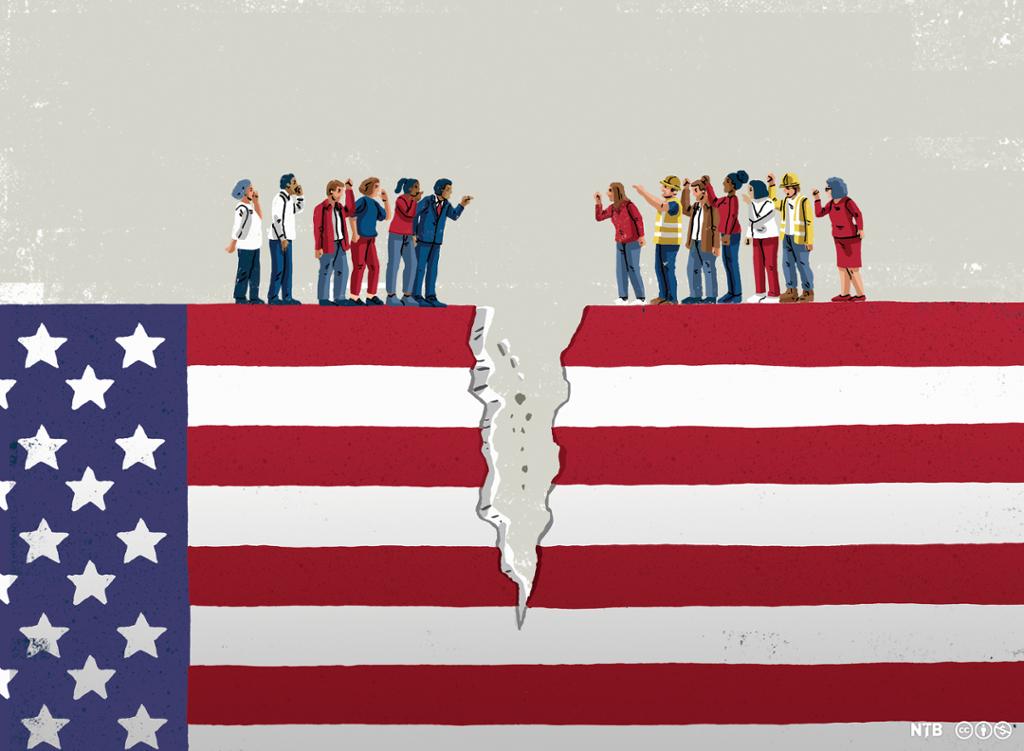The Presidential Election

The president is elected every four years. The candidate must be at least 35 years old and a natural-born citizen of the United States. While they may have lived abroad, they must have been a resident of the US for at least 14 years. The President may run for re-election only once, so the maximum term is eight years.
While it is possible to run for president for a small party or as an independent candidate, no such candidate has ever won a US presidential election. Someone who wants to succeed in winning the presidency will have to try to become the candidate for either the Republican Party or the Democratic Party.
US citizens who are at least 18 years old, and who meet the resident requirements of their state, can vote. Citizens of the American territories Puerto Rico, the Virgin Islands, Guam and American Samoa can only vote in primary elections.
Study the chart
Below, you can see a chart with information about the US Presidential election. Study the chart before you read on.
To elect a president, each state will hold a primary election, a caucus, or both. A caucus is a meeting where the members of a political party state who they would prefer to have as a candidate. The voting happens publicly. A primary election is an election to choose a candidate to represent a party. Here, the voting takes place at a polling station, and the vote is secret.
The national party conventions mark the conclusion of the parties’ nomination processes and the beginning of the race for the presidency. The votes gained in the primary elections and caucuses correspond to delegates that will vote for the candidate at each party's national convention.
Ideally, a candidate will have won so many delegates that the national convention may focus on planning the presidential campaign. However, if two or more candidates have about the same number of delegates, the national convention must first decide who will become the party's candidate.
The national convention is where the party's platform is presented: What can the voters expect if the party's candidate wins the election? What issues will be put front and centre?
The national conventions function as pep rallies for those who attend them and as party advertisements for those who watch them on TV. All political debates and important speeches are televised on prime-time TV, the most important one being the presidential candidates’ pre-written acceptance speeches.

Once the candidate has been chosen, he or she chooses a running-mate who will become vice president if they win the presidential election in November. The two candidates together are known as a ticket.
When the presidential candidates have been selected, they can begin to campaign against the other party's candidate. Now the temperature of the election process increases by many degrees.
One effect of the two-party system is that some people will vote more for a candidate than for a party. Another effect is that since both parties have to appeal to as many people as possible, they often develop a platform that appeals to the centre of American politics.
Moderation used to be the path to success. However, as polarisation has increased in the US in recent years, we have seen the Republican party veer to the right, and the Democratic party veer to the left. The extremes of each party have been given greater focus and increased power.
As people become more entrenched, they become less open to switching between parties. People vote based on the party's and the candidates' attitude towards single issues, like abortion, immigration, LGBTQ+ rights, gun control, or health care. The voters are willing to overlook that a candidate does not have a plan for dealing with other issues, as long as they speak plainly about the issues they care about.
During the election campaign, the presidential candidates travel around the country, give speeches, talk to crowds and to groups of people, and take part in televised debates. A lot of money is spent on expensive media campaigns.

Finally, on the Tuesday after the first Monday in November, Election Day arrives. Voters gather at the polling stations to vote for the presidential ticket of their choice. However, the president is not elected by direct popular vote. The votes are counted, and each candidate is given a proportionate number of electors who will formally elect the president and the vice-president on the voters' behalf. The electors vote for the candidate that has won the most votes in the state they represent. They are, however, not legally bound to do so, and there are rare examples of electors who have voted differently. However, the election result is announced long before the Electoral College meets, so the vote is regarded as a mere formality.
The Electoral College is a remnant from the past, when travelling across the country was difficult. It would have taken months to gather votes from all over the country. Instead, the different states would send trusted men to Washington to deliver each state's final decision.
Each state gets as many electors as it has members of Congress (House of Representatives and Senate). In addition, Washington DC. is represented by three electors. The Electoral College is made up of a total of 538 electors. In December, about a month after the election, they will gather in their respective state capitals to cast their official votes. A candidate has to receive at least 270 electoral votes in order to win the presidency.
The Electoral College is a winner-takes-all system: the candidate who leads the popular vote in each state receives all the electoral votes from that state. This means that a candidate who won millions of votes in a particular state on Election Day may receive no votes in the Electoral College.
The result of the Electoral College vote usually reflects that of the popular vote – but not always. In the 2000 election, Al Gore won the popular vote, but did not win the presidency. George W. Bush won the most electoral votes and became president. This was also the case in 2016 when Hillary Clinton won the popular vote, but Donald Trump had most electoral votes.
On 20 January, there is an official ceremony called the Presidential Inauguration. The main event of the inauguration takes place when the president-elect takes the oath of office and becomes the president of the United States: “I do solemnly swear that I will faithfully execute the Office of the President of the United States, and will to the best of my ability, preserve, protect, and defend the Constitution of the United States.” (The United States Constitution, Article 2, Section 1.)
When the newly elected President gives his first speech, the inaugural address, the entire world pays attention. Most presidents use their inaugural address to present their vision of America and to set forth their goals for the nation. They would also try to create a feeling of unity and remind people that in spite of different political views, they all share the same democratic ideals.
Multiple Choice Quiz about the US Presidential Election
Click on the alternative you think is correct.
Relatert innhald
A set of tasks based on the article "Presidential Elections".